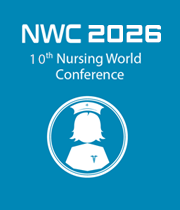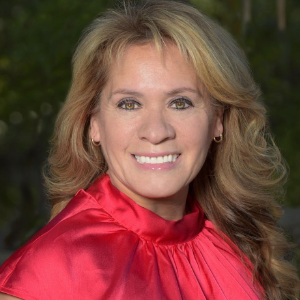Title : Empowering & retaining nurses by strengthening the world's health workforce
Abstract:
As the population grows and shifts, a diverse nursing workforce will be critical to patient-centered, culturally competent care. When nurses share similarities with their patients, whether through language, religion, gender or countless other characteristics, patients’ unique needs are more readily and fully addressed, and outcomes improve. One of the most important things prospective nurses need to know about is health disparities and inequalities in nursing. The healthcare industry is currently going through a seismic shift in an effort to address health equity issues, creating a more level playing field for patients in need of care no matter their socioeconomic or racial background. Nurses are at the forefront of this change.
Cultural competence in nursing encompasses a nurse’s capability to engage with patients who come from a wide range of cultural backgrounds where healthcare may be a challenge due to economic disparity, religious background, societal complications, and other potential barriers to care. This also means working with patients of different sexualities or genders.
Culturally diverse nursing workforce and the ability to provide quality, culturally competent patient care is imperative in order mirror the patient population, and communities we serve. More must be done before adequate representation becomes a reality.
Equality and diversity are terms that are used frequently in nursing, healthcare, and workplace settings. Nurses' professional standards of practice and behavior are underpinned by values of equality and diversity. This means that nurses must treat people as individuals, avoid making assumptions about them, recognize diversity and individual choice, and respect and uphold their dignity and human rights.
Nursing retention and turnover impacts health care on many facets; pressures are increasing to provide quality care in a cost-effective manner to a satisfied patient with an engaged staff as defined by the Quadruple Aim. Retention of experienced staff nurses is paramount as the nursing profession enters another shortage era, which leads to impact on patient safety and quality of care.
Communication is critical in the nurse-patient relationship, and miscommunications have the potential to result in catastrophic delays in timely and appropriate care. Nurses who share experiences with patients are more adept at assessing their unique concerns while providing culturally competent care.
The nation's 4.3 million registered nurses work in every aspect of health care and are crucial in delivering care, evolving health care systems locally and nationally, closing health disparities, and improving the nation’s health. Addressing the complex issues
Building an adequate supply of nurses; all levels of the pillar (community healthcare worker, can, ma, lvn, RN, APRN)
Creating Safe, empowering, and healthy work environments; creating a workforce health and well-being a part of the fabric
Increase work flexibility: scheduling and staffing approaches to create flexibility in workforce deployment
Reimagine delivery models: leverage digital tools and adapt care models based on patient and employee preferences
Strengthen talent pipeline and build skills for the future
Public policy that supports quality health care;
Laws and regulations that enable nurses to practice at the full extent of their education and licensure.
Strategies to support diversity in nursing:
- Promote the profession. Encourage nursing as a viable career path for anyone with an interest, beginning from a young age, regardless of gender or ethnicity. Share the possibilities of online nursing degree programs that remove limited access and geographic barriers many potential students may have experienced.
- Make a personal commitment to lifelong learning. For example, learn a second language to help bridge communication barriers. While Spanish-speaking nurses are in high demand, there is a need for nurses fluent every language from French and Tagalog to Hindi and American Sign Language.
- Broaden your influence. Become involved in community outreach programs, which often target underserved minorities, and urge other nurses to join you. Participating strengthens your awareness of community members’ circumstances.
How Does a Diverse Nursing Staff Influence Outcomes?
- Stronger communication. Communication is critical in the nurse-patient relationship, and miscommunications have the potential to result in catastrophic delays in timely and appropriate care. While nonverbal cues are often supportive, most health-related communication is verbal. Nurses who are fluent in a patient’s language can connect more directly, without the need for an interpreter who may unintentionally alter the message.
- Shared perspective. Well-prepared and compassionate nurses can empathize with virtually any patient. They may be limited in their ability to fully understand a patient’s culture or background, however, unless they have similar backgrounds. Nurses who share experiences with patients are more adept at assessing their unique concerns while providing culturally competent care.
- Improved policies and research. Nurse leaders can be instrumental in crafting effective industry policies and research initiatives. When those nurses are represent the needs of a diverse population — perhaps because they personally identify with their patients —culturally sensitive policies and research addressing health disparities among minorities are more likely to follow.
Learning Objectives:
- To recognize and learn the meaning of terminology relevant to diversity and social justice work in healthcare.
- Promoting and coordinating cultural awareness measures to encourage other medical professionals to provide exceptional care to all patients
- To increase awareness of the intersecting issues that impact multiple understandings and approaches to diversity, equity and inclusion in healthcare.
Different ways for nurses to display cultural competence, including:
- Using language and terms patients understand, creating a deeper connection with patients and helping them understand their care
- Respecting patients’ cultural or religious values or beliefs, empowering them to feel in charge of their care protocols while honoring their backgrounds
- Recruiting healthcare professionals from underrepresented communities so patients can choose to work with nurses or other medical professionals who better reflect their experiences
- Identifying patients in underserved populations and communities in order to address gaps in care and ensure patients are getting the health and wellness support they need to thrive
- Define 2 strategies to support diversity in nursing: Promote the profession, Broaden your influence, make a personal commitment to lifelong learning
- Provide 2 examples that include diversity: Diversity includes variations in religion, ethnicity, personality traits, sexual orientation, gender identity, generational differences, socioeconomic status, and disability status
Let’s create our SMART Goals to Support Diversity and Inclusion
Specific: The goal you set needs to be precise, explicit, and unambiguous. This is also true of how you plan to achieve that goal: example would be recognizing religious holidays-the goal is specific-to allow all major religious holidays to be observed by those who celebrate them.
Second example: Hold Regular Sensitivity Trainings
“My goal is to hold 30-minute cultural and religious sensitivity sessions in my place of business which all employees must attend. The overall goal is to reduce insensitive comments made based on culture, ethnicity, religion, or sex as much as possible, with the end goal of eliminating all such insensitive comments within 1 month of starting this process.”
This goal is specific—to have sensitivity training to reduce all instances of insensitivity in the workplace.
Third example: Increase Employee Diversity
“I will increase ethnic, sexual, and cultural diversity in my place of business to support diversity and inclusion in my workplace. Currently, I have 10 white men that comprise 90% of my workforce. Within the next six months, the goal is to have these white men account for only 30% of my workforce, with the rest consisting of women and men and women of various ethnic and cultural backgrounds.”
S: This goal is specific—to increase the number of women and people of color in the workforce by X amount within the given time.
Measurable: The goal must be measurable according to quantitative analysis. You need a way to track your progress toward the goal: This goal is measurable by determining the major religious holidays and allowing employees to take that time off.
M: This goal is measurable by tracking the number of such incidents in the workplace.
Attainable: The goal should be realistic and achievable. If it’s not realistic, there is no point in setting it in the first place: This goal is attainable by implementing the policy in your workplace.
M: This goal is measurable by tracking the number of such incidents in the workplace.
Relevant: Your goals need to be relevant to the situation and work toward supporting diversity and inclusion: this goal is related to creating an inclusive and diverse workplace.
R: This goal relates directly to creating an inclusive workplace.
Timebound: The goals must be timebound or adhere to a deadline. If you don’t have deadlines, you may not be motivated to achieve the goal quickly. A deadline is also a great way to keep track of progress on a linear scale: this goal is timebound, as it is to be achieved within 6 months.
T: This goal is timebound—to end all such instances within one month of the first sensitivity training session.



